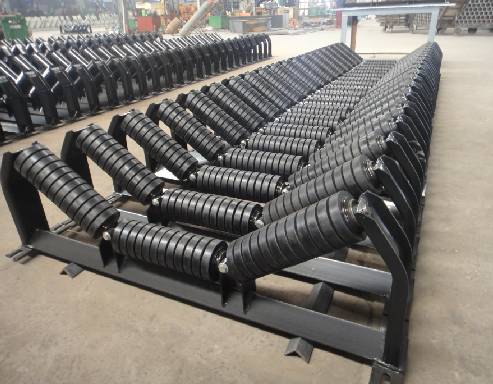 Afrikaans
Afrikaans  Albanian
Albanian  Amharic
Amharic  Arabic
Arabic  Armenian
Armenian  Azerbaijani
Azerbaijani  Basque
Basque  Belarusian
Belarusian  Bengali
Bengali  Bosnian
Bosnian  Bulgarian
Bulgarian  Catalan
Catalan  Cebuano
Cebuano  Corsican
Corsican  Croatian
Croatian  Czech
Czech  Danish
Danish  Dutch
Dutch  English
English  Esperanto
Esperanto  Estonian
Estonian  Finnish
Finnish  French
French  Frisian
Frisian  Galician
Galician  Georgian
Georgian  German
German  Greek
Greek  Gujarati
Gujarati  Haitian Creole
Haitian Creole  hausa
hausa  hawaiian
hawaiian  Hebrew
Hebrew  Hindi
Hindi  Miao
Miao  Hungarian
Hungarian  Icelandic
Icelandic  igbo
igbo  Indonesian
Indonesian  irish
irish  Italian
Italian  Japanese
Japanese  Javanese
Javanese  Kannada
Kannada  kazakh
kazakh  Khmer
Khmer  Rwandese
Rwandese  Korean
Korean  Kurdish
Kurdish  Kyrgyz
Kyrgyz  Lao
Lao  Latin
Latin  Latvian
Latvian  Lithuanian
Lithuanian  Luxembourgish
Luxembourgish  Macedonian
Macedonian  Malgashi
Malgashi  Malay
Malay  Malayalam
Malayalam  Maltese
Maltese  Maori
Maori  Marathi
Marathi  Mongolian
Mongolian  Myanmar
Myanmar  Nepali
Nepali  Norwegian
Norwegian  Norwegian
Norwegian  Occitan
Occitan  Pashto
Pashto  Persian
Persian  Polish
Polish  Portuguese
Portuguese  Punjabi
Punjabi  Romanian
Romanian  Russian
Russian  Samoan
Samoan  Scottish Gaelic
Scottish Gaelic  Serbian
Serbian  Sesotho
Sesotho  Shona
Shona  Sindhi
Sindhi  Sinhala
Sinhala  Slovak
Slovak  Slovenian
Slovenian  Somali
Somali  Spanish
Spanish  Sundanese
Sundanese  Swahili
Swahili  Swedish
Swedish  Tagalog
Tagalog  Tajik
Tajik  Tamil
Tamil  Tatar
Tatar  Telugu
Telugu  Thai
Thai  Turkish
Turkish  Turkmen
Turkmen  Ukrainian
Ukrainian  Urdu
Urdu  Uighur
Uighur  Uzbek
Uzbek  Vietnamese
Vietnamese  Welsh
Welsh  Bantu
Bantu  Yiddish
Yiddish  Yoruba
Yoruba  Zulu
Zulu idler rollers for belt conveyors
Idler Rollers for Belt Conveyors Essential Components for Efficient Material Handling
Belt conveyors are an integral part of many industries, from mining to manufacturing, providing a reliable and efficient means of transporting bulk materials. At the heart of a belt conveyor system are the idler rollers, essential components that support the conveyor belt and ensure smooth operation. Understanding the role and importance of idler rollers is crucial for optimizing conveyor performance and longevity.
What are Idler Rollers?
Idler rollers, also known as idlers, are the cylindrical rollers that are positioned along the length of a conveyor belt. They are designed to support the weight of the belt and the material being transported while minimizing friction. Idler rollers come in various designs and configurations, including troughing idlers, flat idlers, and return idlers. Each type is tailored to specific applications and conveyor layouts to ensure efficient material transfer.
Types of Idler Rollers
1. Troughing Idlers These are typically designed with a slight angle, forming a trough shape that helps contain the material on the belt. They are advantageous for transporting loose materials and preventing spillage during operations.
2. Flat Idlers As the name suggests, flat idlers have a straight surface, ideal for handling materials that require a stable and smooth surface for transport. They are commonly used in applications involving packaged goods or small components.
3. Return Idlers Positioned on the return side of the conveyor, these idlers support the empty belt as it returns to the loading area. Their role is crucial for maintaining belt alignment and preventing sagging.
Importance of Idler Rollers
Idler rollers play a vital role in the overall efficiency and reliability of a belt conveyor system. Their primary functions include
- Load Support Idlers support the weight of the conveyor belt and the materials it carries, distributing the load evenly to reduce stress and wear on the belt.
idler rollers for belt conveyors

- Fracture Reduction By minimizing the friction between the belt and the roller surface, idlers reduce the wear and tear on both the belt and the rollers, prolonging the lifespan of the entire system
.- Alignment and Tracking Properly installed and maintained idler rollers help in keeping the conveyor belt aligned. Misalignment can lead to increased wear and potential breakdowns, resulting in costly downtime.
- Noise Reduction Well-functioning idler rollers can significantly reduce noise levels associated with conveyor operations, contributing to a more pleasant work environment.
Maintenance of Idler Rollers
To ensure idler rollers perform at their best, regular maintenance is essential. This includes
- Regular Inspections Periodically checking for signs of wear, misalignment, or damage. Early detection can prevent minor issues from escalating into major failures.
- Lubrication Many idler rollers have bearings that require regular lubrication to reduce friction and wear. Maintaining proper lubrication schedules is crucial.
- Replacement When idler rollers show significant wear or damage, timely replacement is necessary to maintain efficiency and prevent damage to other conveyor components.
Conclusion
Idler rollers are critical components in the functionality of belt conveyors, playing an essential role in material handling operations across various industries. Their ability to support loads, reduce friction, and maintain alignment makes them indispensable. Proper selection, maintenance, and timely replacements of idler rollers not only enhance the efficiency of conveyor systems but also extend their lifespan, ensuring that operations remain smooth and cost-effective. As industries continue to evolve and seek greater efficiency, the importance of understanding and optimizing idler roller performance will only increase.
-
Revolutionizing Conveyor Reliability with Advanced Rubber Lagging PulleysNewsJul.22,2025
-
Powering Precision and Durability with Expert Manufacturers of Conveyor ComponentsNewsJul.22,2025
-
Optimizing Conveyor Systems with Advanced Conveyor AccessoriesNewsJul.22,2025
-
Maximize Conveyor Efficiency with Quality Conveyor Idler PulleysNewsJul.22,2025
-
Future-Proof Your Conveyor System with High-Performance Polyurethane RollerNewsJul.22,2025
-
Driving Efficiency Forward with Quality Idlers and RollersNewsJul.22,2025





























